Playing volleyball can be intense, but it’s also a sport where you can easily hurt your ankles, even if you’re a pro. So, we’ve checked out loads of ankle braces to find the best ones to keep your ankles safe and comfy while playing.
We looked at all sorts of ankle braces, like ones with mechanical stuff, ones that are like socks, and even ones with gel or air pockets. We made sure they’re strong, comfortable, and don’t cost too much.
Best Ankle Braces For Volleyball: The best ankle braces for volleyball provide essential support, comfort, and protection without hindering mobility. They keep your ankles safe during the game, allowing you to play confidently.
After all that, we found the best ankle braces for volleyball. These are the ones that give your ankles good support and protection without making it hard to move around. So, now you can play without worrying about getting hurt!
Our Top 3 Picks
Here are our top 3 picks:
1
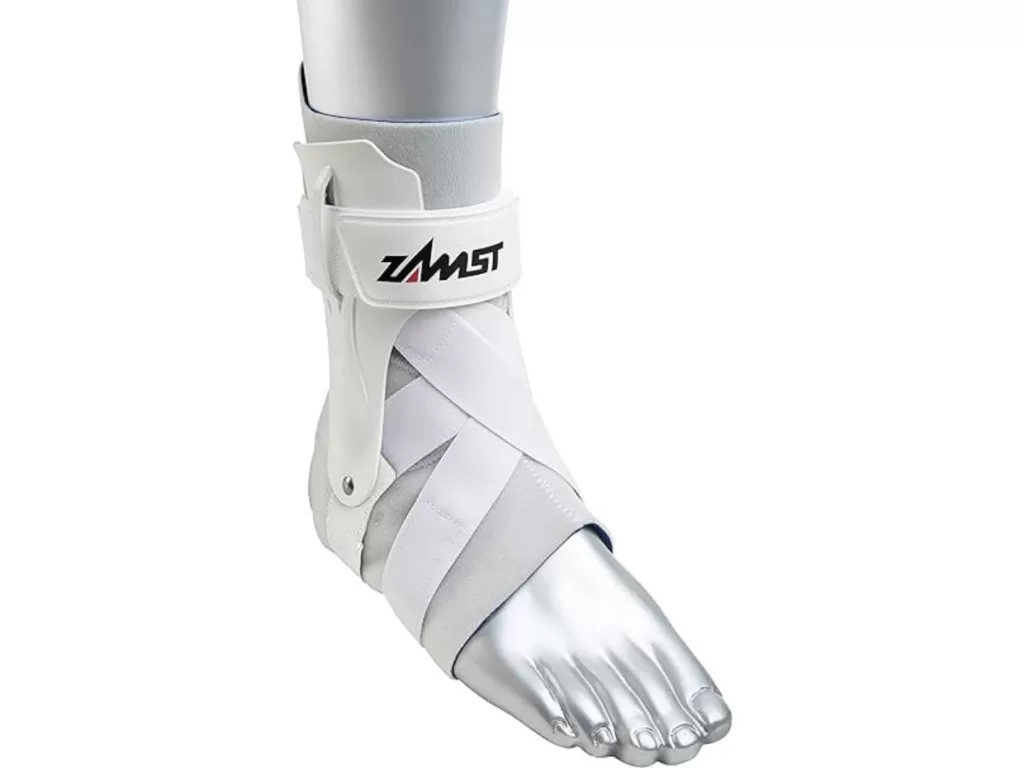
Zamst A2-DX Strong Active
2
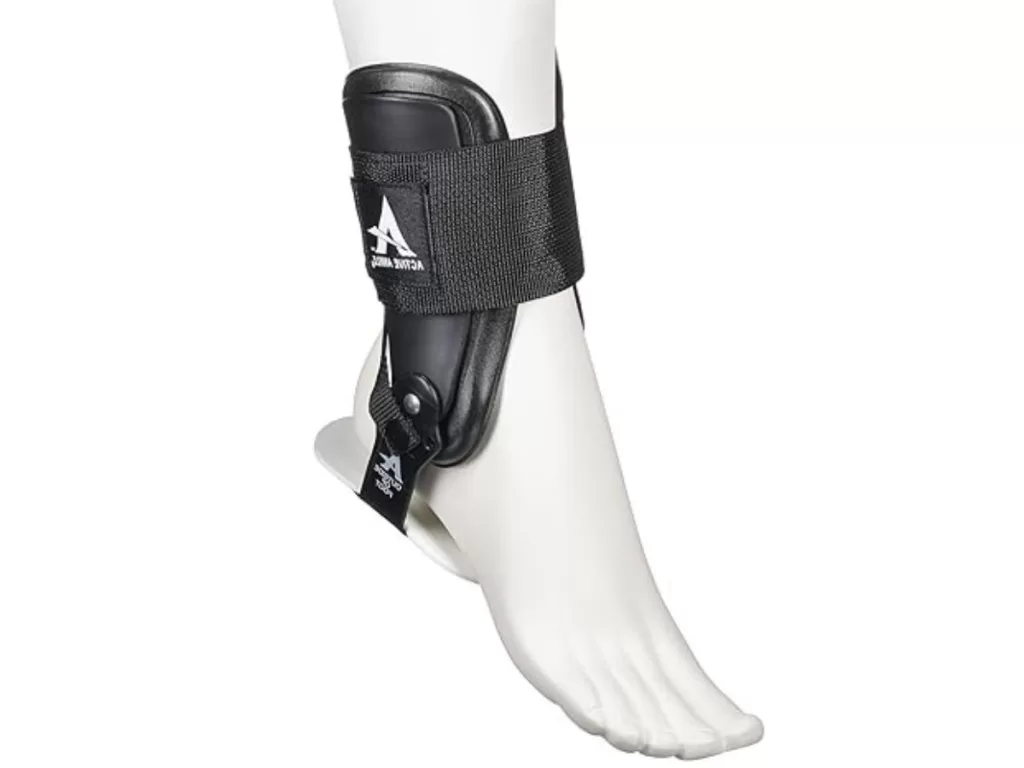
Cramer Active Ankle T2 Brace
3
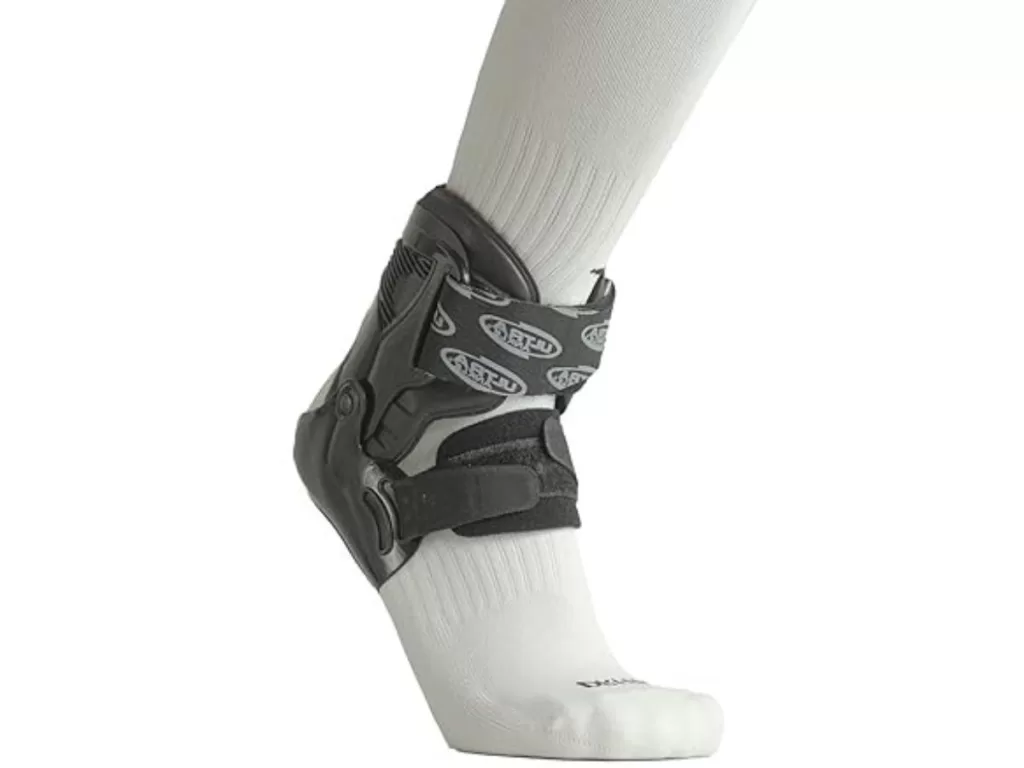
Ultra Zoom® Brace for Injury
5 Best Ankle Braces For Volleyball Reviews
Here are the top 5 best ankle braces for volleyball:
- Best Ankle Brace For Volleyball – Zamst A2-DX Strong Active
- Best Ankle Brace – Cramer Active Ankle T2
- Best Budget Ankle Brace – Ultra Zoom® Brace for Injury
- Heavy Duty Ankle Brace – Mizuno DXS2 For Volleyball
- Best Braces for Volleyball – Active Ankle 329 Compression Sleeve with Straps
1. Best Ankle Brace For Volleyball – Zamst A2-DX Strong Active

Specifications:
I’m excited to introduce you to the Zamst A2-DX, the ultimate choice for volleyball ankle support. As a fellow athlete, I understand the importance of robust protection and stability for your ankles. Discover why the Zamst A2-DX is the go-to solution for players in need of superior support. Let’s dive in!
A Champion’s Choice:
Learn why the Zamst A2-DX is highly favored by athletes who require top-tier ankle protection and support.
Worth the Extra Minute:
While it may take a bit longer to put on, discover how those extra minutes are a worthwhile investment in your ankle health.
Curry-Approved Durability:
Explore why NBA superstar Steph Curry’s trust in this brace speaks volumes about its resilience and dependability.
Unmatched “Locked-In” Feeling:
Find out how the Zamst A2-DX provides the confidence to leap, dig, and move on the court with an unshakable “locked-in” sensation.
Reasons to Buy
Reasons to Avoid
2. Best Ankle Brace – Cramer Active Ankle T2

Specifications:
Growing up in the world of volleyball, I observed that 90-95% of players in my community chose the Cramer Active Ankle T2 ankle braces. In this review, I want to share why these braces are not just popular, but also the ideal balance of support, comfort, and affordability for volleyball enthusiasts.
Support Meets Comfort:
Discover how the Active Ankle T2 strikes the perfect balance between providing solid support and ensuring your comfort.
Form-Fitting Security:
Learn how semi-rigid lateral supports create a protective barrier around your ankle, preventing unnatural and dangerous movements.
Forget They’re There:
Uncover the surprising comfort of these braces, they may take a little getting used to, but soon enough, you won’t even notice you’re wearing them.
Move Naturally:
Explore how the hinges allow these braces to move seamlessly with your natural on-court movements, enhancing your agility and performance.
Reasons to Buy
Reasons to Avoid
3. Best Budget Ankle Brace – Ultra Zoom® Brace for Injury

Specifications:
In my journey to find the perfect volleyball ankle brace, I stumbled upon the Ultra Zoom® Brace for Injury ankle brace, and it’s giving the renowned Zamst a run for its money. These two braces share many similarities in durability and unwavering support. In this review, I’ll help you decide between the two, weighing the pros and cons. Discover why the Ultra Zoom could be your ideal choice for dependable protection and comfort.
Durability Meets Support:
Explore how the Ultra Zoom lives up to the standard set by the Zamst, offering top-tier durability and unwavering ankle support.
The Showdown: Ultra Zoom vs. Zamst:
Delve into the key differences and similarities between these two exceptional braces, making your decision-making process easier.
Easier Application, Budget-Friendly:
Learn why some users find the Ultra Zoom easier to put on, and its affordability makes it an attractive option for those seeking value.
A Minor Squeak and Simple Solutions:
Addressing a minor concern, discover how a bit of lubricant can silence any squeaking over time, ensuring a seamless experience.
Reasons to Buy
Reasons to Avoid
4. Heavy Duty Ankle Brace – Mizuno DXS2 For Volleyball
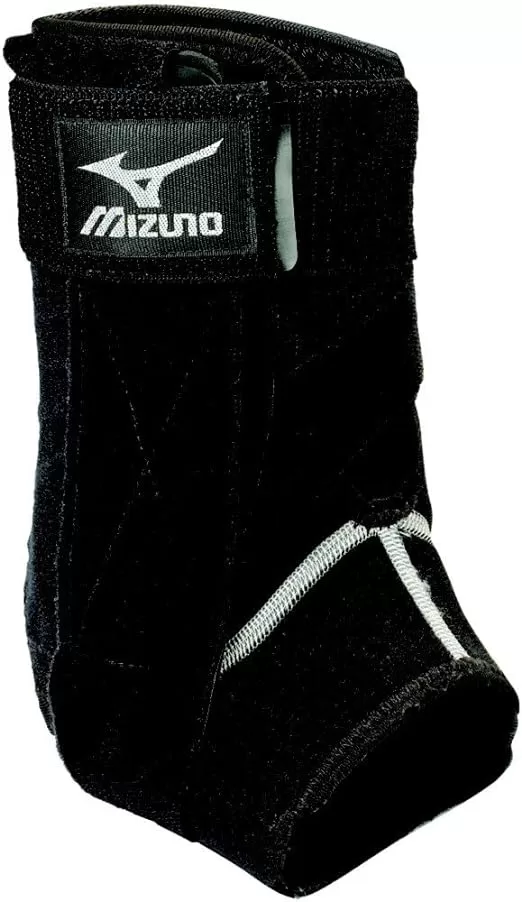
Specifications:
When it comes to volleyball ankle protection, the Mizuno DXS2 ankle brace is a name that stands out, offering a blend of comfort and unrestricted mobility. As a passionate volleyball player, I’ve put these ankle pads to the test, and they truly deliver. In this review, I’ll dive into the key features that make the Mizuno DXS2 one of the best choices for ankle protection, along with its pros and cons.
Comfort Meets Mobility:
Discover how the Mizuno DXS2 strikes the perfect balance, providing both comfort and freedom of movement for volleyball players.
Three-Tier Stability:
Explore the unique design of this ankle brace, featuring three separate straps – V-shaped, under the heel, and Anchored Wrap – for unparalleled stability and support.
Tailored Lateral Stability:
Learn about the option to add inserts for lateral stability, a great feature for players seeking extra support.
Antibacterial and Deodorant Construction:
Discover the convenience of Mizuno’s choice of materials, which not only offer protection but also reduce the need for frequent washing thanks to antibacterial and deodorant properties.
Reasons to Buy
Reasons to Avoid
5. Best Braces for Volleyball – Active Ankle 329 Compression Sleeve with Straps
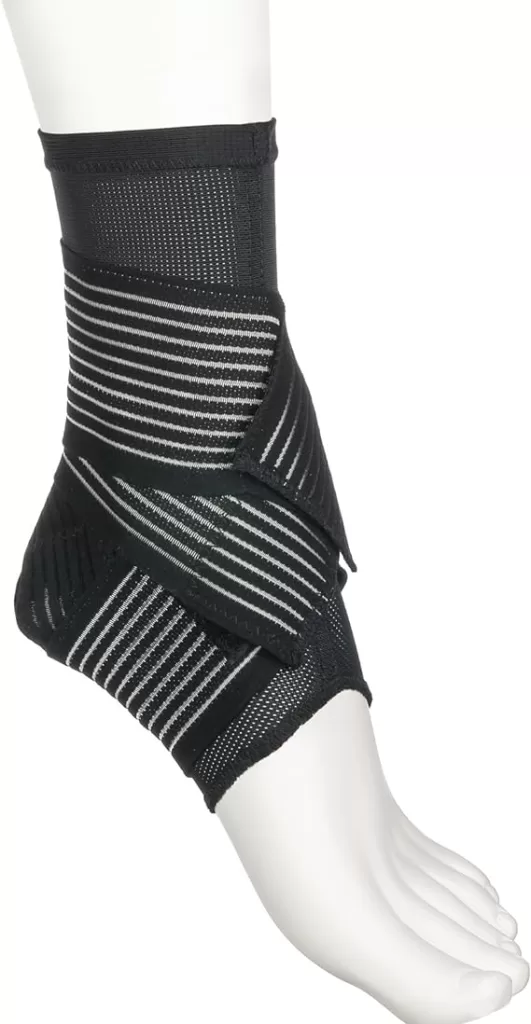
Specifications:
Let’s talk about Active Ankle 329 ankle braces for liberos and defensive specialists. I’ll start by saying that I don’t typically recommend ankle braces for these players, given their low risk of ankle injury. However, if you’re still considering ankle support, some lightweight options can provide a balance between mobility and protection.
The Low Ankle Injury Risk:
Understand why liberos and defensive specialists often don’t require ankle braces, given their relatively low risk of ankle injuries.
The 329 Sleeve: Lightweight Support:
Explore the 329 sleeve, a minimalistic ankle brace that offers some support while prioritizing on-court mobility.
Minimal Support, Maximum Mobility:
Learn how the 329 sleeve strikes a balance between providing minimal support and ensuring essential mobility, which is crucial for liberos and backcourt setters.
For Front and Back Court Setters:
Discover why, as a setter who plays in both the front and backcourt, you might want to consider upgrading to a more protective brace like the T2 or Ultra Zoom for front-row play.
Reasons to Buy
Reasons to Avoid
Is Ankle Brace Usage Essential for Every Volleyball Player?
Volleyball players often face ankle problems, like bursitis, because of all the jumping and moving. Using ankle braces is smart because they provide support and reduce the risk of injuries.
If you do get hurt, wearing a brace can help you heal faster by keeping your ankle still. So, if you play volleyball and want to stay safe, yes, ankle braces are a good idea.
Brace Types For Different Ankles
There are three types of ankle braces to choose from:
- Sock Brace: These are like sliding on a sock, simple and popular, but not super durable. They’re better for recovering from injuries.
- Mechanical Brace: Good for preventing injuries, but a bit pricey and less comfy. It’s best for when you’re playing.
- Gel/Air Pockets: These are great for healing. They’re comfy, reduce swelling, and help you get back on the court faster. The Aircast AirSport Ankle Support Brace is a good pick in this category.
Choosing the Right Ankle Brace Based on Your Volleyball Position
Although the differences between each ankle brace for various volleyball positions may not be significant, I’ve put together some recommendations based on court roles.
Ankle Braces Tailored for Wing Attackers in Volleyball
For players on the sides, the Active Ankle T2s or Ultra Zooms work well. If your ankles are usually fine, think about the Mizuno DXS2. But if you’ve had ankle issues before, go for the Eclipse II or Ultra High-5 for better protection.
Ankle Braces Tailored for Setters in Volleyball
If you’re at the back most of the time (6-2 offense), go for the lightweight 329 ankle sleeve. But if you’re in the front row, check out the T2, Ultra Zoom, or Mizuno DXS2.
Ankle Braces Tailored for Mid Blockers in Volleyball
Central blockers jump a lot in volleyball, which can hurt their ankles. As a central blocker, I’ve had good experiences with Active Ankle T2s; they’ve reduced my ankle sprains.
If you’re a central blocker, think about Active Ankle T2s or Ultra Zooms. If your ankles are prone to issues, check out Eclipse II or Ultra High-5s.
Ankle Braces Tailored for Liberos in Volleyball
If you’re a defensive specialist in volleyball, you don’t need ankle braces because most ankle injuries happen when you jump, which isn’t a big part of your job.
Wearing ankle braces might even make your ankles weaker in the long run. If you still want some support, go for the lightweight 329 ankle sleeve.
When you’re picking ankle braces, consider these things:
- Ankle Injury History: If you’ve had lots of ankle sprains, get strong braces. If not, lightweight ones are okay.
- Your Position: If you jump a lot, get sturdy braces. If not, lighter ones are fine.
- Your Shoes: Some braces don’t work well with certain shoes.
- Color: Ankle braces come in white or black, so pick your favorite.
- How Many: Remember, you need two braces because they’re sold individually.
Don’t go for lace-up braces; they might affect your performance. Instead, choose semi-rigid ones. Also, focus on exercises to make your ankles stronger and prevent injuries.
Factors to Consider When Buying the Best Ankle Brace for Volleyball
When you’re looking for the right ankle brace for volleyball, here are some important things to think about:
- Comfort: Make sure the brace is comfy because if it’s not, you won’t want to wear it. Some designs, like the Ultra Zoom, work better with high socks for added comfort.
- Durability: If you play hard and often, you’ll want a strong brace that can handle the game. It’s worth spending a bit more upfront for one that lasts.
- Purpose: Decide if you need a brace to prevent injuries or help you recover from them. Mechanical braces are good for preventing, while sock or gel braces are better for recovery.
- Your Position: If you play at the net, you put more pressure on your ankles. So, you’ll need a brace that gives extra protection, even if it’s a bit less mobile.
- Adjustability: Look for braces that can be adjusted to fit you better. They should be snug but still let you move well.
- Breathability: Breathable braces keep you comfortable, just like breathable shoes. So, consider this for added comfort.
FAQs About Best Ankle Braces For Volleyball
Q:1 Why do volleyball players need ankle braces?
Volleyball players use ankle braces to reduce the risk of ankle injuries, such as sprains, during the game. They provide support and stability to the ankle joint, especially during jumping and quick lateral movements.
Q:2 What are the different types of ankle braces for volleyball?
There are three main types: sock braces, mechanical braces, and gel/air pocket braces. Sock braces are simple and comfortable, mechanical braces are sturdy for injury prevention, and gel/air pocket braces are great for healing and reducing swelling.
Q:3 How do I choose the right ankle brace for my position in volleyball?
Consider your position and the amount of jumping you do. For example, central blockers who jump a lot might need sturdier braces, while defensive specialists who jump less may not need ankle braces. It’s essential to match your brace to your playing style.
Q:4 What factors should I consider when buying ankle braces for volleyball?
Look for comfort, durability, purpose (injury prevention, recovery, or support), your volleyball position, adjustability for a snug fit, and breathability for added comfort during play.
Q:5 Can wearing ankle braces affect my performance on the volleyball court?
While some studies suggest lace-up ankle braces may reduce performance, semi-rigid braces are less restrictive and generally have a minimal impact.
It’s important to prioritize ankle strengthening exercises to complement brace use and reduce the risk of injuries while maintaining performance.
Conclusion:
In conclusion, choosing the best ankle brace for volleyball is a crucial decision for players of all positions. These braces not only offer protection against injuries but also enhance comfort and performance on the court.
The article outlines the various types of ankle braces, their suitability for different positions, and important factors to consider during the selection process. It emphasizes the significance of matching the brace to one’s playing style and injury history.
Ultimately, prioritizing the well-being and safety of your ankles while considering your unique needs and preferences is essential in enjoying a successful and injury-free volleyball experience.
We hope you will be well aware of the best ankle braces for volleyball, after reading this comprehensive article. If you have any questions, feel free to comment below!
